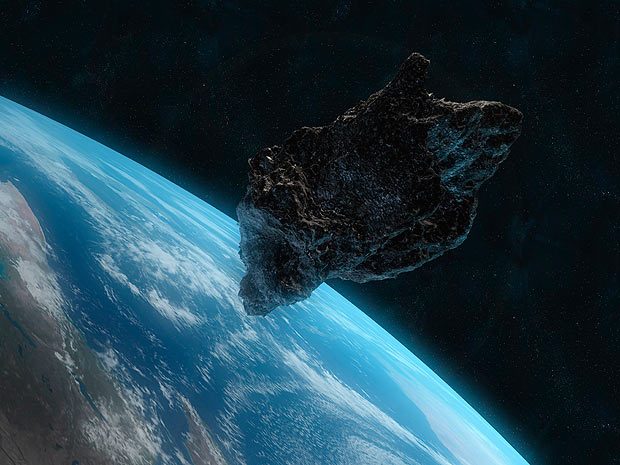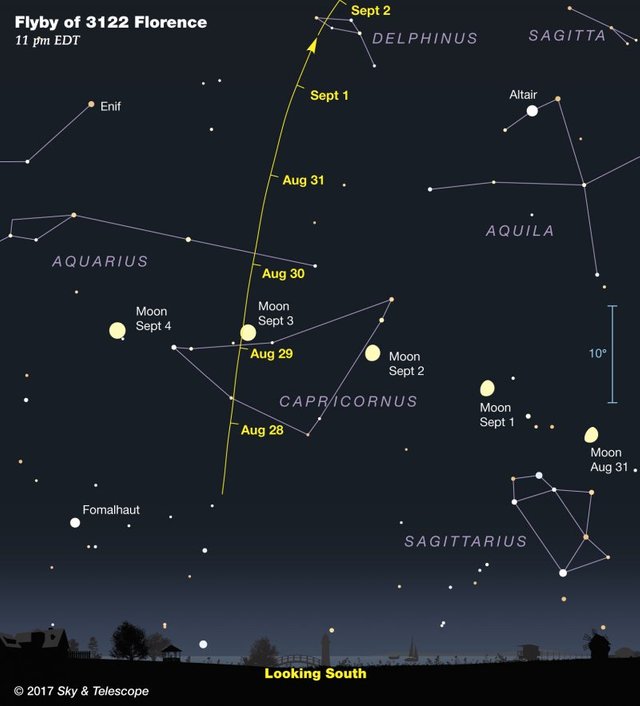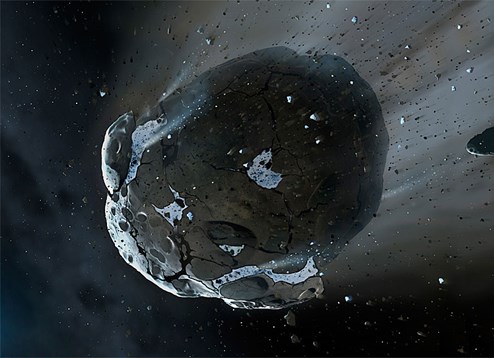Huge Asteroid Flies by Earth this Friday
Asteroid Florence will cruise by our planet at a distance of only 4.4 million miles (7 million kilometers) — about 18 times the distance between Earth and the moon. Florence measures 2.7 miles (4.4 km) across, making it the largest space object to pass this close to Earth since NASA started tracking asteroids in detail. The asteroid hasn't been this close to Earth since 1890, and it won't be this close again until 2500, NASA officials have said. You can learn more about Florence and its flyby in a live webcast tonight (Aug. 31) at 9 p.m. EDT (0100 GMT on Sept. 1) by the astronomy broadcasting service Slooh.

According to Sky & Telescope magazine, the asteroid should now be easily visible in telescopes. The moon reached its first-quarter phase on Tuesday (Aug. 29), so its brightness will only slightly wash out Florence's reflected light.
"Despite some interference from moonlight, 3122 Florence should be fairly easy to spot in even modest backyard telescopes," Kelly Beatty, a senior editor at Sky & Telescope magazine, said in a statement.
When to see asteroid Florence
The best time to see asteroid Florence will be in the late evening, when it's positioned well overhead, according to Sky & Telescope. Peak brightness will be tonight (Aug. 31), when it's at magnitude 8.7. However, the asteroid should be almost as bright for several days before and after the end of the month.
Another good time to watch is Saturday (Sept. 2) at about 8 p.m. EDT (0000 GMT on Sept. 3). The asteroid will pass by four fourth-magnitude stars at the head of the constellation Delphinus, the dolphin, according to Sky & Telescope.
Florence's path in the night sky will move north by a little less than the full moon's diameter every hour. Within just a few minutes of observing, you should see the asteroid move in a telescope.
Sky & Telescope has detailed charts to help with locating 3122 Florence. In general, over several days, the asteroid will move roughly from south to north, and will pass through the constellations Capricorn, Aquarius, Delphinus, Vulpecula and Cygnus.

An asteroid called Flo
Asteroid 3122 Florence was discovered in 1981 by astronomer Schelte "Bobby" Bus at the Siding Spring Observatory in Australia. The asteroid is named in honor of Florence Nightingale (1820-1910), who pioneered modern nursing, NASA officials said in a separate statement.
Weather permitting, Florence will be visible in telescopes as a ninth-magnitude object. "Magnitude" refers to the brightness of an object; lower magnitudes are brighter. Florence will be a little dimmer than Neptune (magnitude 8), and well below the threshold visible to the naked eye (magnitude 6). The brightest planet, Venus, can get as bright as a brilliant magnitude -5.
The asteroid is relatively bright because of its large size and because its surface reflects roughly 20 percent of the sunlight that hits it, according to Sky & Telescope. (For comparison, the moon reflects only 12 percent.) Astronomers think that Florence is nearly spherical because its brightness changes only a little during its 2.4-hour rotation.
So go grab your telescopes guys ! Tell me what you think about this as well ! Cheers and thank you !

Don't forget to follow me for more up to date news.
nice article!!
thx man !
Congratulations @skunkbrasi! You have completed some achievement on Steemit and have been rewarded with new badge(s) :
Click on any badge to view your own Board of Honor on SteemitBoard.
For more information about SteemitBoard, click here
If you no longer want to receive notifications, reply to this comment with the word
STOP